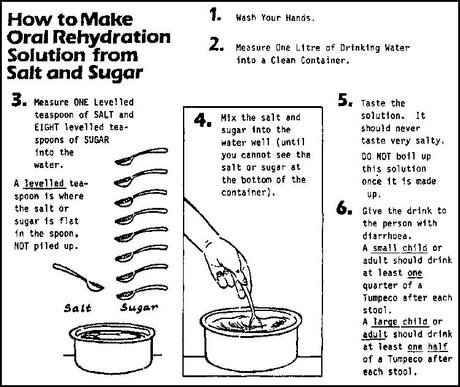 It’s not a mysterious disease. It has happened to you, me and most others who are trying to make their living in the developing world. It’s the leading cause of death among neonates and children in Bangladesh and even in Nepal. Diarrhea, the name starts with a D, may signify three words, Dehydration, Deterioration and Death.
It’s not a mysterious disease. It has happened to you, me and most others who are trying to make their living in the developing world. It’s the leading cause of death among neonates and children in Bangladesh and even in Nepal. Diarrhea, the name starts with a D, may signify three words, Dehydration, Deterioration and Death.
Diarrhea can be defined as the loss of stool volume greater than 200 gram in a single day or having frequent stools for more than three times in a day. Nobody weighs their shit but they have kept that indicator so that we (the med people) can actually understand the term with accuracy. The later indicator is what people actually come up with.
There are several factors why diarrhea is the leading cause of death in the pediatric group. The first most important reason would be the literacy factor among the general population. Educated mothers / parents open their ORS sachets with or without dehydration and if the condition is more serve, they reach for help immediately. The uneducated mother/parents, well by the time he/she reaches the hospital, the kid already suffers from severe dehydration.
There are many institutions in Nepal which aim to prevent diarrhea, constantly teach how ORS (Oral Rehydration Solution) is made. In order to make the solution you must make it in a 1 Liter container. Other factors like washing hands regularly to avoid any fecal oral transmission and keeping the optimum hygiene in the house are good factors that prevent the menace.
Educating the mother in antenatal examinations or postnatal visits about the signs of dehydration can help to avoid this situation to a certain extent, why not? Signs are something that med people only understand. What people come up with are called symptoms. So educating them about the signs like, check your Childs appearance, has he stopped crying? Check his eyes, is it sunken? Check his tongue, is it dry or moist? Try pinching your child’s skin in the abdomen near the umbilicus, is the skin coming back rapidly or taking longer to settle at its previous state? The latter indicates dehydration. Is there something wrong with the child’s thirst? Is he thirsty? Is the child able to drink the water?
I am very much an optimist when it comes to preventive medicine. But how much can there be done, if parents don’t have much time to monitor their child regularly due to increased work load or due to mothers malnutrition due to poverty that she cant secrete enough breast milk to exclusively feed her young one.
Deal with diarrhea first, that’s the killer in our country suggested a friend when we talked about what projects are appropriate for Nepal via Health Nepal Foundation. What can be done? Let’s start with, what the government can do; a) awareness campaigns every year especially in the pre-monsoon and post –monsoon season, teach the mothers about the signs of dehydration, make them the doctor for their child’s diarrhea( well to a certain extent). b) Send enough ORS solutions to the appropriate districts before the crisis occurs. c) Include the diarrhea awareness program with the antenatal check up.
I can only think of some factors right now, maybe after my graduation, when I am actually practicing in the field, I might bring some more innovative ideas for the prevention of diarrhea in our country. I am looking forward to that day!

